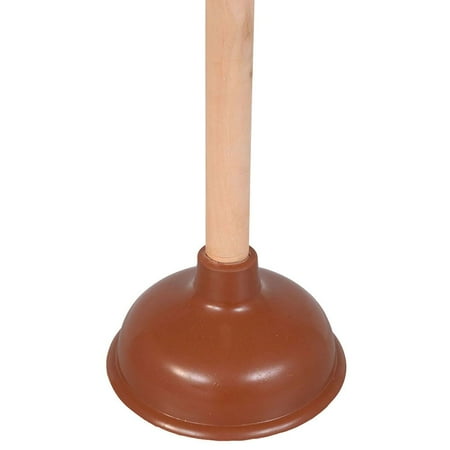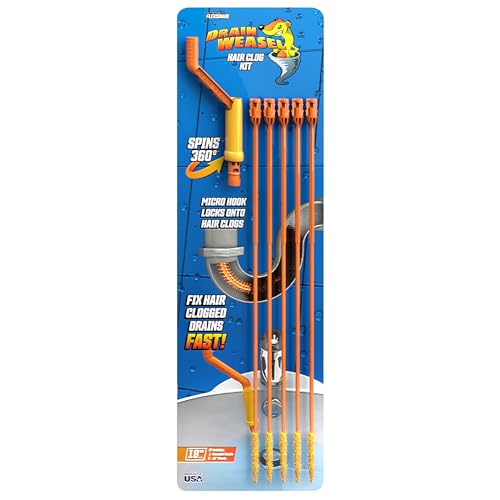5 ways to unclog a bathtub drain, loved by professional plumbers for the rapid results
Our experts share their top tips for banishing blockages


There are few tasks less appealing than unclogging a bathtub drain, but plumbers take time and money, and if you're short on either, pulling on your rubber gloves and tackling it yourself might be the best fix.
We find that hair is the worst drain-clogging offender, followed by soap build-up and residue from shampoos and soaps. However, if your drain has been slow since installation, the gradient of the pipework beneath or a more serious sewerage issue might be at play, which is when you’ll need to call in a professional.
Otherwise, for normal drain build-up, our professional plumbers share their top five cleaning tips for unclogging bathtub drains and how to stop the blockage getting worse.
How to unclog a bathtub drain
1. Remove obvious obstructions
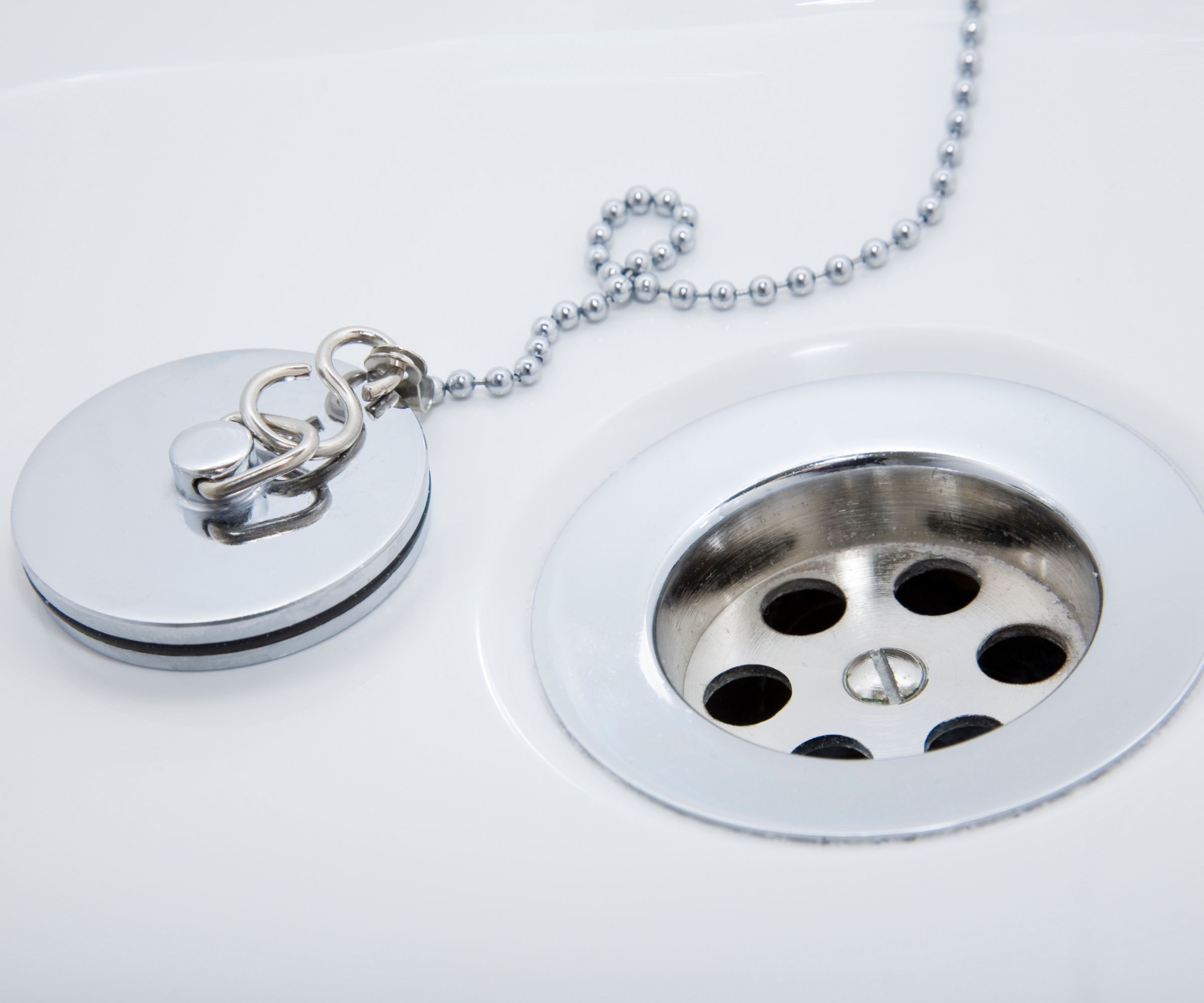
Much like fixing a slow draining sink, you might find a superficial blockage you can resolve quickly by removing physical obstructions such as hair stuck in the plughole.
Taylor Riley, co-founder of Impact Cleaning Professionals and founder of Boom Facility Service Advisors, says, 'The first step I take is to use a drain clog remover tool to remove any hair or gunk.'
If you have a traditional drain stopper on a chain, accessing the drain opening on your bathtub will be a breeze. However, most modern baths support some form of integrated drain stopper – be it pop-up, click-clack (a.k.a. toe-touch), or trip-lever. In this instance, you must remove it to gain better access to the drain. The majority screw off, but some may require a screwdriver to pop the drain stopper up and out of place for access.
Once you remove the drain stopper, you may find a clog of hair or gunk comes with it. Take a good look down the drain, using a torch if required. If you can see any obvious obstructions, use your fingers, a set of small tongs, or a wire coat hanger to pull them up and out.
Design expertise in your inbox – from inspiring decorating ideas and beautiful celebrity homes to practical gardening advice and shopping round-ups.
We recommend the GoodCook Pro Tongs available at Walmart for this, as they have a 10 inch reach, and are small enough to fit down the plughole.
All prices were correct at the time of publication.
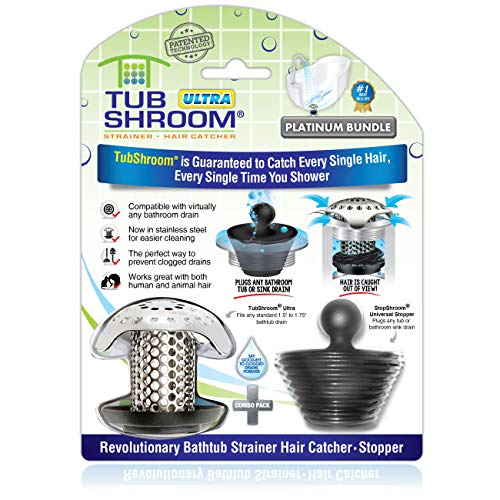
Prevention is usually better than a cure. This bestselling stainless steel hair catcher has a black rubber bottom compatible with most drains to catch hair before it blocks up your pipe. The mushroom shape means hair and other gunk is covered from view till you pop it up.
2. Flush the blockage away

Assuming there is no standing water in your bath, the next easiest solution for unclogging a bathtub is the good old warm water trick.
Chris Wootton, managing director of cleaning service Poppies says, ‘I have found that pouring warm water down the drain will help you get to the areas that may be out of reach. The temperature is important for clearing grease and soap that has stuck together, as the heat will melt it away and help get things moving.' Importantly, though, you should never pour boiling water down the drain.
Just a liter or so of warm water should suffice. Once it has cleared, try running the faucet to see if things are running smoothly. If not, it’s worth trying one more flush before moving to another solution.
3. Use a plunger
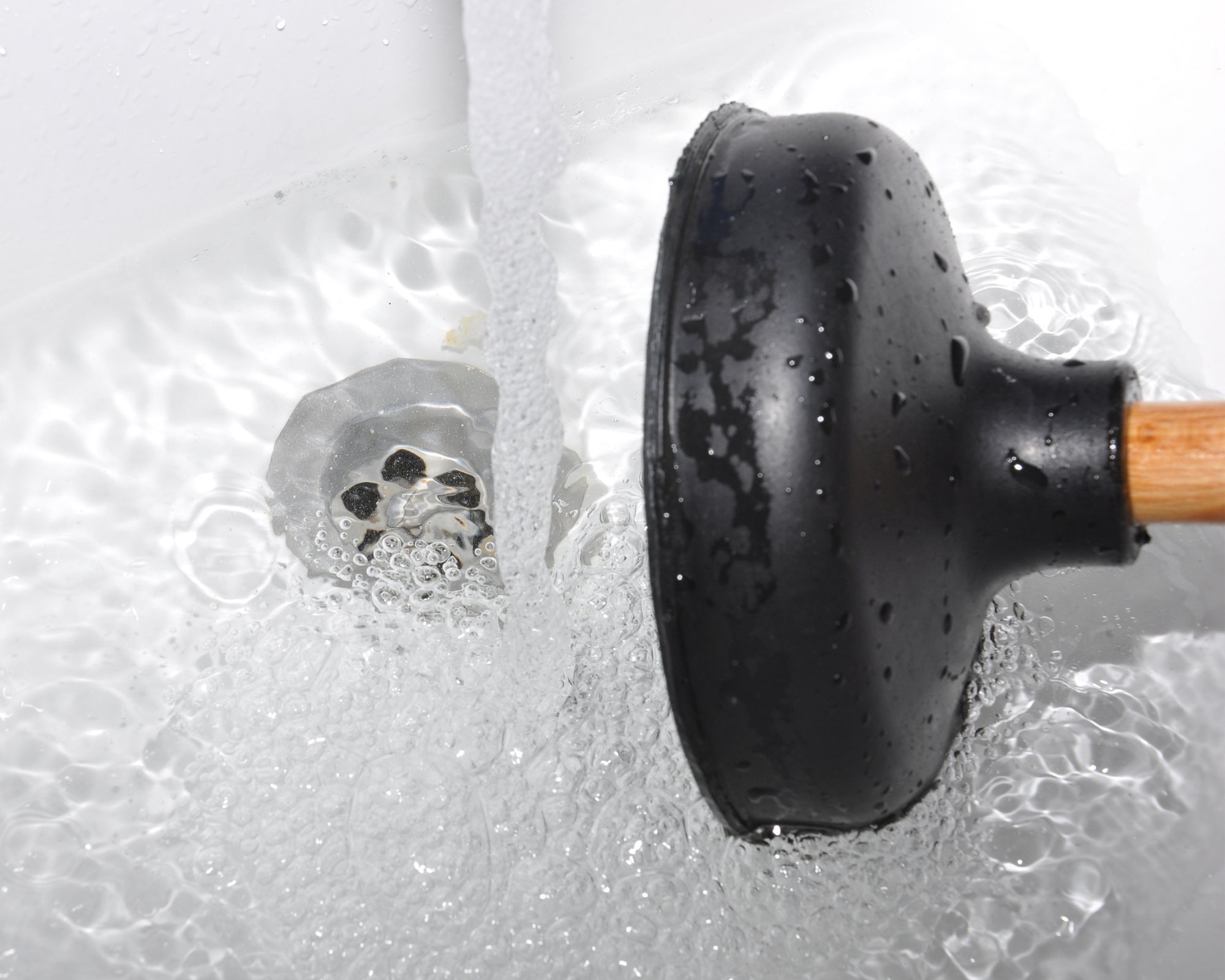
Before using a plunger, plug the bath’s overflow to create the necessary vacuum. Most overflow covers screw off, then you can simply plug the hole with a damp cleaning rag.
‘To execute the plunger technique properly, remove the drain stopper and fill the water up by a couple of inches. Take a sink plunger, not a toilet plunger, and place this directly over the drain before pumping it up and down a few times, taking pauses to see if the water begins to drain,’ says Trinity Owhe, design expert at Victorian Plumbing. ‘Repeat this a few times until, with luck, the blockage is gone.’
We recommend using the #1 top rated Luigi's Sink and Drain Plunger for Bathrooms available at Amazon, which clears 10 seconds quicker than any other type of plunger in just a few pumps. It's also heavy-duty, forcing down eight times the normal volume of air exerted by a traditional plunger.
Your bathtub will likely fill with dirty water if the plunger has been successful, so make sure you rinse it all away thoroughly with cold water before wiping it down with a bathroom cleaning spray. We recommend the Clorox Bathroom Disinfecting Cleaner Spray available at Walmart, as it disinfects and kills 99.9% of bacteria and viruses with a bleach-free formula.
4. Use baking soda and vinegar

As the owner of SewerRepairs.com, Jason Best has over 20 years of experience solving drain issues, and he recommends unclogging your bathtub drain by using a vinegar and baking soda solution. Around the home, there are so many things you can clean with vinegar and clean with baking soda, both of which are powerful, eco-friendly alternatives to traditional, chemical products.
'Our most effective DIY solution is baking soda and vinegar, he says. 'Pour 1/2 cup baking soda down the drain, then 1/2 cup vinegar. Cover and let sit for 15 minutes, then flush with boiling water. The chemical reaction breaks up clogs without damaging pipes.'
This solution works as the chemical reaction creates a strong foam-like substance that may dislodge blockages, and help to neutralize any unpleasant odors. 'Once the mixture stops fizzing be sure to rinse this away with water,’ adds Jason. For a similar effect, you can also try the Alka-Seltzer hack to clear slow-moving drains.
It's important to note that some experts say you shouldn't use vinegar and baking soda to unclog a drain. This is because in older homes, with metal pipework, acidic solutions like vinegar can accelerate the corrosion of pipes. If you're worried about damaging your own pipes, avoid using vinegar, which has acetic acid.
5. Use a plumbing snake

If your blockage is still refusing to budge, it’s time to tool up and learn how to use a drain snake, or one of the range of tools readily available for this purpise.
Drain snakes are designed to delve deeper into your plumbing via the drain. Plumber’s snakes, hair snakes, and long, flexible pipe cleaners are all brilliant for breaking through blockages further down the pipework underneath your bath.
‘A metal plumber’s snake that is about 9 ft long is best for accessing any obstructions that can’t be removed by hand. They’re easy to use and very effective,’ says Ben Chalk, chartered construction manager at GIR Services. We recommend the bestselling Cobra Electronics Peerless Homeowner Toiler Auger available at Walmart, as it has a long, flexible shaft with a crank handle for easy use, and a non-slip, grip plastic handle to help prevent scratches.
For really tough clogs, you might need a mechanical snake, in which case David Brabant, owner at Creative Edge Pools, recommends calling a professional, to avoid damaging your plumbing. 'But, a cheap 25 ft snake from Amazon (such as the XFIRE-GEAR 25FT Drain Auger, which is a handy 10-in-1 product) or Home Depot can work in a pinch,' he says. 'Just be very careful feeding it down the drain.'
FAQs
How often should you clear out your drain?
Bathtub drains are inherently susceptible to clogging, particularly after periods of neglect. While occasional blockages are common, repeated issues necessitate proactive, preventative measures to ensure proper drainage.
If a bathtub drain experiences chronic obstruction, implementing a mechanical safeguard is advised. A simple strainer (such as the TubShroom Ultra Revolutionary Bath Tub Drain Protector available at Amazon, which is a best seller) will effectively capture hair and debris, preventing clogs while simplifying routine drain maintenance.
It’s worth adopting the same tactics to avoid the need to unclog a sink, too.
Does pouring salt down your drain clean it?
Whilst cleaning with salt may dissolve specific substances such as grease or grime in a kitchen sink drain, it's not recommended for use in the bathroom because of the typical makeup of the blockages.
Learning how to clean a bathtub drain will help prevent potential blockages from developing. It's one of the steps people with nice-smelling bathrooms take to remove bad odors and keep their bathtub drains flowing freely.

Ottilie joined Homes & Gardens last year, after finishing a Master's in Magazine Journalism at City, University of London. With previous contributions in Livingetc and Motorsport Magazine, she produces content for the Solved section on the website, focusing on clever tips and tricks to keep your home beautiful, organized, and clean, with particular expertise on all things home fragrance. She also has a Master's degree in English Literature and History of Art from the University of Edinburgh, where she developed a love for inspiring interiors and architecture.
- Linda Clayton
- Gabriella DysonContributor
